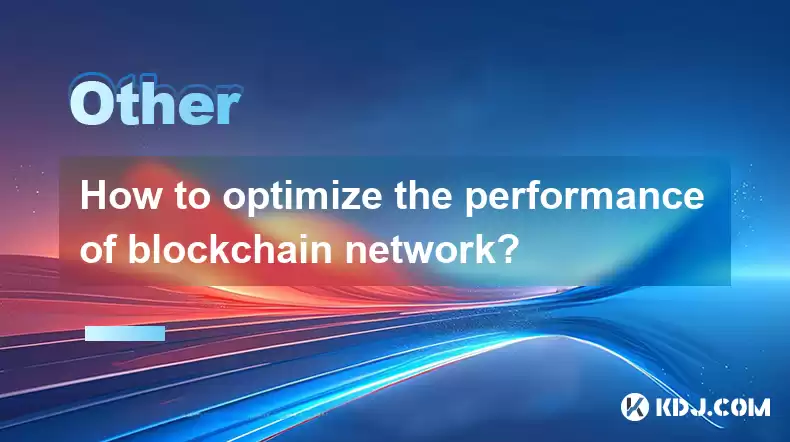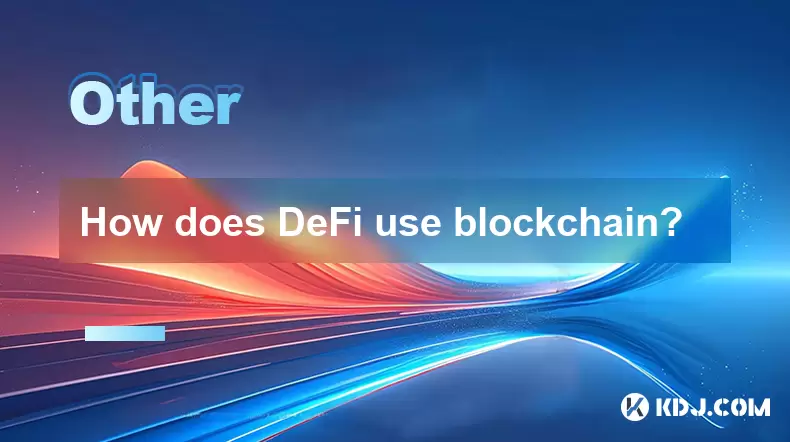-
 Bitcoin
Bitcoin $113700
0.66% -
 Ethereum
Ethereum $3471
-0.04% -
 XRP
XRP $2.885
-0.16% -
 Tether USDt
Tether USDt $1.000
0.05% -
 BNB
BNB $747.8
-0.10% -
 Solana
Solana $161.1
-0.98% -
 USDC
USDC $1.000
0.02% -
 TRON
TRON $0.3255
-0.22% -
 Dogecoin
Dogecoin $0.1980
1.46% -
 Cardano
Cardano $0.7237
2.87% -
 Hyperliquid
Hyperliquid $37.79
0.87% -
 Stellar
Stellar $0.3941
5.48% -
 Sui
Sui $3.422
1.35% -
 Chainlink
Chainlink $16.14
1.97% -
 Bitcoin Cash
Bitcoin Cash $540.7
1.55% -
 Hedera
Hedera $0.2432
4.26% -
 Ethena USDe
Ethena USDe $1.001
0.04% -
 Avalanche
Avalanche $21.31
-0.06% -
 Toncoin
Toncoin $3.624
1.19% -
 Litecoin
Litecoin $109.0
0.76% -
 UNUS SED LEO
UNUS SED LEO $8.967
0.09% -
 Shiba Inu
Shiba Inu $0.00001217
1.84% -
 Polkadot
Polkadot $3.584
1.85% -
 Uniswap
Uniswap $9.123
2.03% -
 Monero
Monero $294.7
0.87% -
 Dai
Dai $0.0000
0.01% -
 Bitget Token
Bitget Token $4.322
0.60% -
 Pepe
Pepe $0.00001048
2.65% -
 Cronos
Cronos $0.1329
2.05% -
 Aave
Aave $257.0
1.88%
How to optimize the performance of blockchain network?
To optimize blockchain performance, implement sharding, use layer 2 solutions, choose efficient consensus mechanisms, upgrade network infrastructure, and enhance smart contract efficiency.
Apr 13, 2025 at 12:08 am

How to Optimize the Performance of Blockchain Network?
Blockchain technology, renowned for its decentralized and secure nature, is increasingly being adopted across various industries. However, as with any technology, optimizing the performance of a blockchain network is crucial for ensuring efficiency and scalability. This article delves into several strategies and techniques that can be employed to enhance the performance of blockchain networks.
Understanding Blockchain Performance Metrics
Before delving into optimization techniques, it is essential to understand the key performance metrics of a blockchain network. These metrics include transaction throughput, which measures the number of transactions processed per second; latency, which indicates the time taken for a transaction to be confirmed; and scalability, which refers to the network's ability to handle growth in transaction volume. By monitoring these metrics, one can identify areas that require optimization.
Implementing Sharding
Sharding is a technique that involves dividing the blockchain into smaller, more manageable parts called shards. Each shard contains its own subset of data and can process transactions independently. This approach significantly increases the overall transaction throughput of the network. To implement sharding:
- Choose a sharding mechanism suitable for your blockchain, such as state sharding or transaction sharding.
- Design the shard structure, ensuring that each shard can operate autonomously but still communicate with others.
- Implement cross-shard communication protocols to ensure data consistency across the network.
- Test the sharding implementation thoroughly to ensure it meets the desired performance improvements without compromising security.
Utilizing Layer 2 Solutions
Layer 2 solutions, such as sidechains and off-chain transactions, can help alleviate the burden on the main blockchain, thereby improving its performance. These solutions process transactions outside the main chain and then settle them on the blockchain, reducing congestion and increasing throughput. To utilize layer 2 solutions:
- Identify the type of layer 2 solution that best fits your needs, such as payment channels or state channels.
- Integrate the chosen layer 2 solution into your blockchain infrastructure.
- Ensure that the layer 2 solution is compatible with existing smart contracts and decentralized applications (dApps).
- Conduct extensive testing to verify that the layer 2 solution enhances performance without introducing vulnerabilities.
Optimizing Consensus Mechanisms
The consensus mechanism is a critical component of a blockchain network, as it determines how nodes agree on the validity of transactions. Different consensus mechanisms, such as Proof of Work (PoW), Proof of Stake (PoS), and Delegated Proof of Stake (DPoS), have varying impacts on performance. By choosing a more efficient consensus mechanism, you can significantly improve the network's transaction processing speed and energy efficiency. To optimize the consensus mechanism:
- Evaluate the current consensus mechanism's performance and identify its limitations.
- Research alternative consensus mechanisms that offer better performance characteristics.
- Implement the chosen consensus mechanism, ensuring it aligns with the network's security and decentralization requirements.
- Monitor the performance of the new consensus mechanism and make adjustments as needed.
Enhancing Network Infrastructure
The underlying network infrastructure plays a crucial role in the performance of a blockchain. By upgrading hardware and optimizing network configurations, you can enhance the overall efficiency of the blockchain. Steps to enhance network infrastructure include:
- Upgrade server hardware to increase processing power and storage capacity.
- Implement load balancing to distribute traffic evenly across nodes.
- Optimize network protocols to reduce latency and improve data transmission speeds.
- Use content delivery networks (CDNs) to cache frequently accessed data and reduce the load on the blockchain.
Improving Smart Contract Efficiency
Smart contracts are self-executing programs that run on the blockchain, and their efficiency can significantly impact the network's performance. By optimizing smart contract code and reducing unnecessary computations, you can decrease the time and resources required to execute transactions. To improve smart contract efficiency:
- Analyze existing smart contracts to identify performance bottlenecks.
- Refactor smart contract code to eliminate redundant operations and optimize logic.
- Use gas optimization techniques to minimize the cost of executing smart contracts.
- Implement off-chain computations where possible to reduce the load on the blockchain.
Monitoring and Continuous Improvement
Optimization of a blockchain network is an ongoing process that requires continuous monitoring and improvement. By regularly assessing performance metrics and implementing iterative enhancements, you can ensure that the network remains efficient and scalable. Steps for monitoring and continuous improvement include:
- Set up monitoring tools to track key performance indicators in real-time.
- Conduct regular performance audits to identify areas for improvement.
- Implement feedback loops to gather insights from network participants and stakeholders.
- Continuously test and refine optimization strategies to adapt to changing network conditions.
Frequently Asked Questions
Q: Can optimization strategies vary depending on the type of blockchain (public vs. private)?
A: Yes, optimization strategies can vary significantly between public and private blockchains. Public blockchains, which are open to anyone, often prioritize decentralization and security, which can impact performance. In contrast, private blockchains, which are controlled by a single entity or consortium, can implement more centralized optimization techniques to improve efficiency. For example, a private blockchain might use a more efficient consensus mechanism like Raft or BFT, whereas a public blockchain might stick with PoW or PoS for security reasons.
Q: How does the choice of programming language affect blockchain performance?
A: The choice of programming language can significantly impact blockchain performance. Languages like Solidity, commonly used for Ethereum smart contracts, are designed to be gas-efficient but may have limitations in terms of performance. In contrast, languages like Rust or Go, used in blockchains like Solana and Hyperledger Fabric, offer better performance due to their low-level memory management and concurrency features. Choosing the right programming language can optimize the execution of smart contracts and overall network performance.
Q: What role do node operators play in optimizing blockchain performance?
A: Node operators play a crucial role in optimizing blockchain performance. They are responsible for maintaining and upgrading the hardware and software of nodes, ensuring they operate efficiently. Node operators can also participate in governance decisions that affect the choice of consensus mechanisms and other optimization strategies. By actively managing and optimizing their nodes, operators contribute to the overall performance and scalability of the blockchain network.
Q: Are there any risks associated with implementing optimization strategies?
A: Yes, there are risks associated with implementing optimization strategies. For example, changing the consensus mechanism or introducing sharding can potentially introduce security vulnerabilities if not implemented correctly. Additionally, layer 2 solutions might lead to fragmentation of the network if not well-integrated. It is crucial to conduct thorough testing and security audits before implementing any optimization strategy to mitigate these risks.
Disclaimer:info@kdj.com
The information provided is not trading advice. kdj.com does not assume any responsibility for any investments made based on the information provided in this article. Cryptocurrencies are highly volatile and it is highly recommended that you invest with caution after thorough research!
If you believe that the content used on this website infringes your copyright, please contact us immediately (info@kdj.com) and we will delete it promptly.
- Navigating the Meme Coin Mania: Cold Wallets, SHIB, and DOGE in 2025
- 2025-08-03 22:30:16
- Bitcoin's Price Fall and Scrutiny: What's a New Yorker to Think?
- 2025-08-03 22:30:16
- Shiba Inu's Resistance and Recovery Push: What's Next for SHIB?
- 2025-08-03 22:50:16
- Bitcoin, Hashcash, and Crypto Innovation: A Look at the Foundation and Future
- 2025-08-03 23:12:53
- Meme Coin Mania: Bonk, Pudgy Penguins, and the Quest for the Next Crypto Sensation
- 2025-08-03 22:50:16
- Binance Coin's Bull Run: Chain Upgrades, Token Burns, and the Road to $1000
- 2025-08-03 23:15:31
Related knowledge

What is the difference between on-chain and off-chain transactions?
Aug 02,2025 at 04:22pm
Understanding On-Chain TransactionsOn-chain transactions refer to digital asset transfers that are recorded directly on a blockchain ledger. These tra...

What is a node's role in a blockchain network?
Aug 03,2025 at 03:16pm
Understanding the Function of a Node in a Blockchain NetworkA node is a fundamental component of any blockchain network, acting as a participant that ...

What is the double-spending problem and how does blockchain prevent it?
Aug 02,2025 at 01:07pm
Understanding the Double-Spending ProblemThe double-spending problem is a fundamental challenge in digital currency systems where the same digital tok...

What is the difference between a blockchain and a database?
Aug 01,2025 at 09:36pm
Understanding the Core Structure of a BlockchainA blockchain is a decentralized digital ledger that records data in a series of immutable blocks linke...

How does DeFi use blockchain?
Aug 03,2025 at 11:15pm
Understanding the Role of Blockchain in DeFiDecentralized Finance (DeFi) relies fundamentally on blockchain technology to operate without intermediari...

How does blockchain handle scalability?
Aug 02,2025 at 02:58pm
Understanding Blockchain Scalability ChallengesBlockchain scalability refers to a network's ability to handle an increasing volume of transactions wit...

What is the difference between on-chain and off-chain transactions?
Aug 02,2025 at 04:22pm
Understanding On-Chain TransactionsOn-chain transactions refer to digital asset transfers that are recorded directly on a blockchain ledger. These tra...

What is a node's role in a blockchain network?
Aug 03,2025 at 03:16pm
Understanding the Function of a Node in a Blockchain NetworkA node is a fundamental component of any blockchain network, acting as a participant that ...

What is the double-spending problem and how does blockchain prevent it?
Aug 02,2025 at 01:07pm
Understanding the Double-Spending ProblemThe double-spending problem is a fundamental challenge in digital currency systems where the same digital tok...

What is the difference between a blockchain and a database?
Aug 01,2025 at 09:36pm
Understanding the Core Structure of a BlockchainA blockchain is a decentralized digital ledger that records data in a series of immutable blocks linke...

How does DeFi use blockchain?
Aug 03,2025 at 11:15pm
Understanding the Role of Blockchain in DeFiDecentralized Finance (DeFi) relies fundamentally on blockchain technology to operate without intermediari...

How does blockchain handle scalability?
Aug 02,2025 at 02:58pm
Understanding Blockchain Scalability ChallengesBlockchain scalability refers to a network's ability to handle an increasing volume of transactions wit...
See all articles

























































































